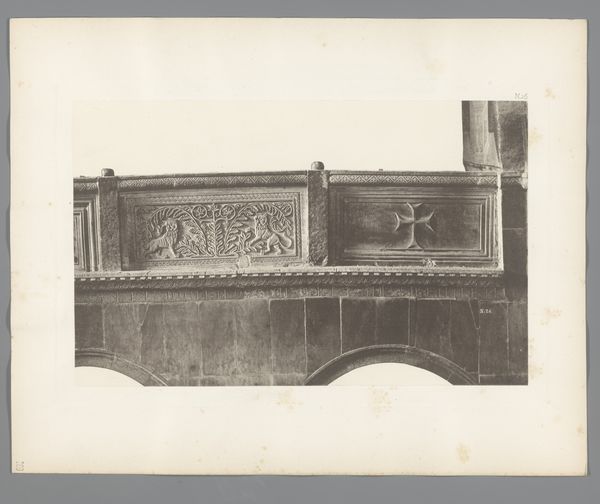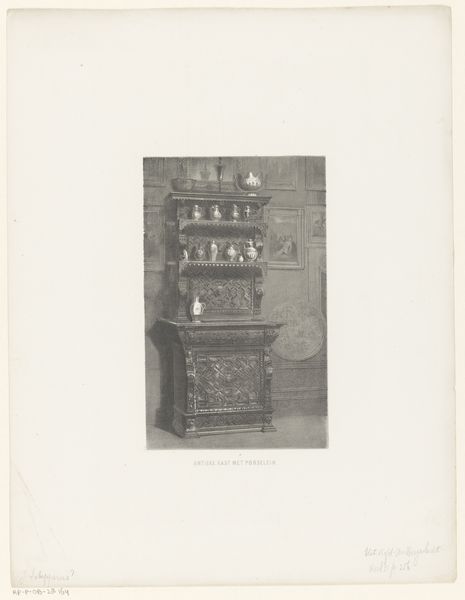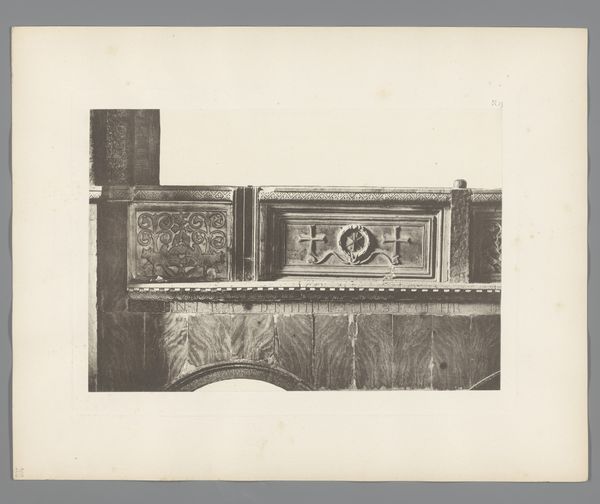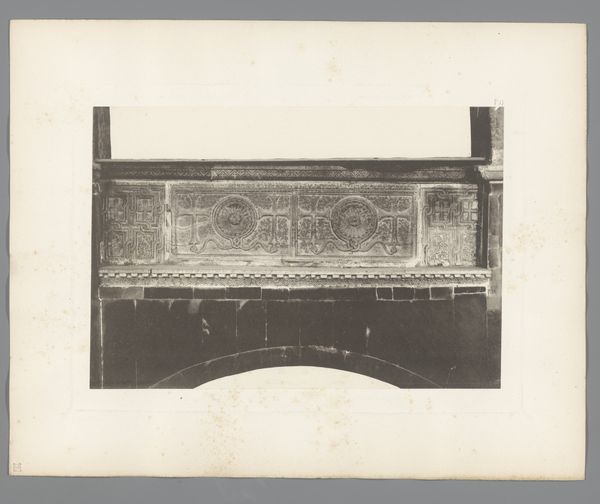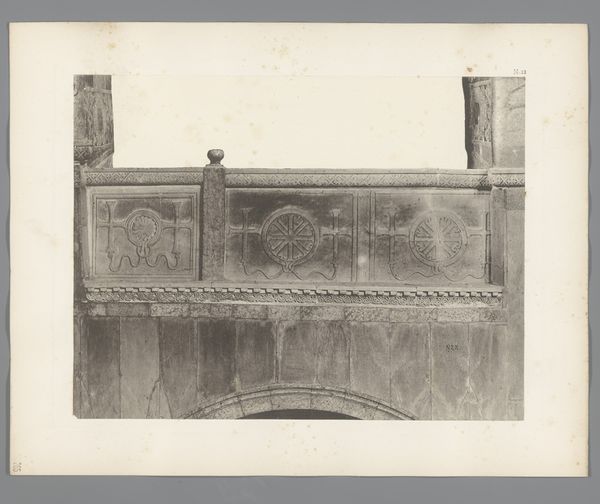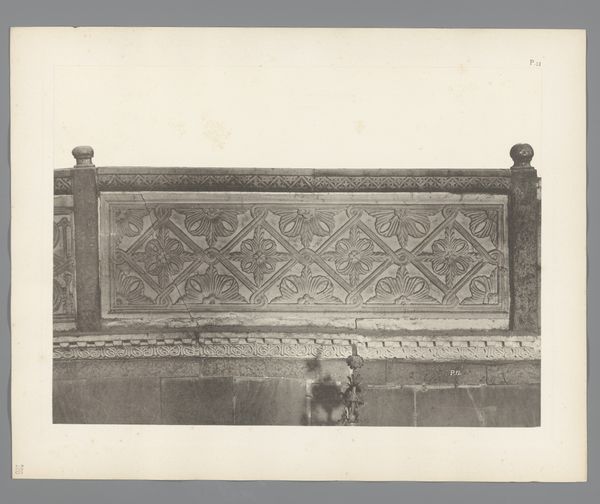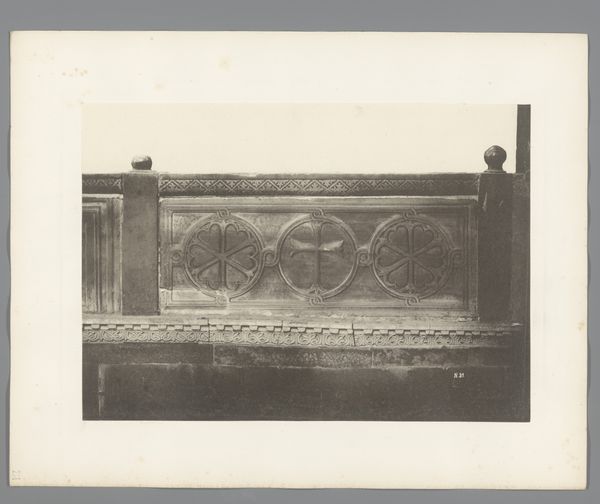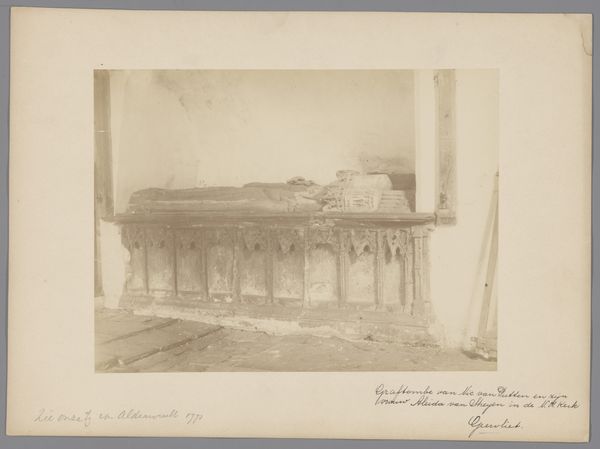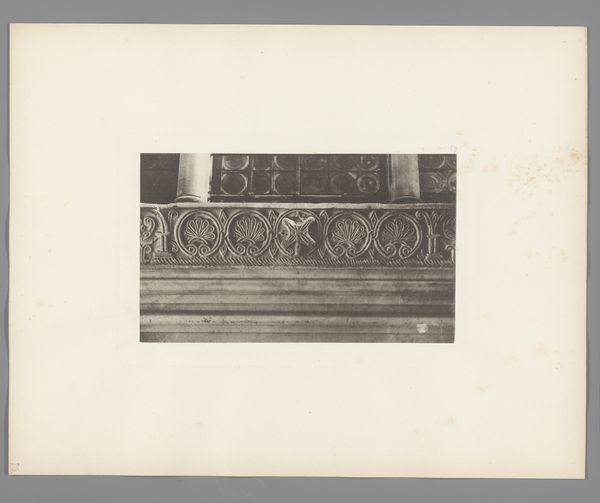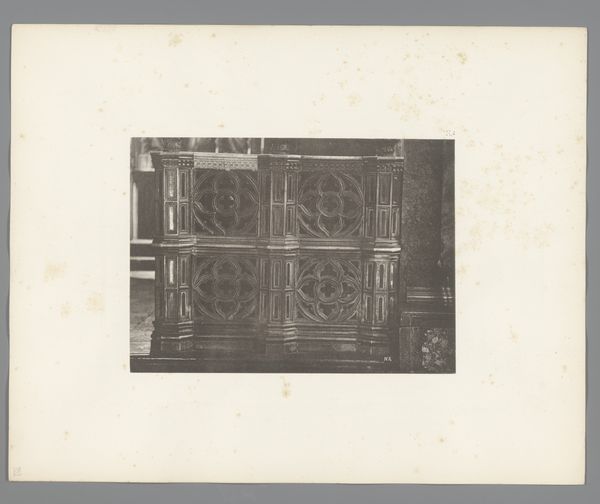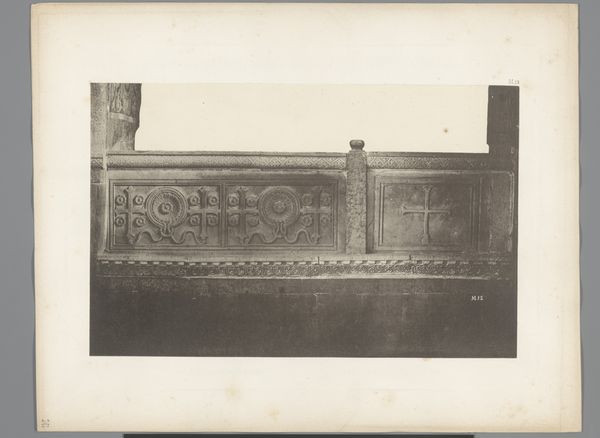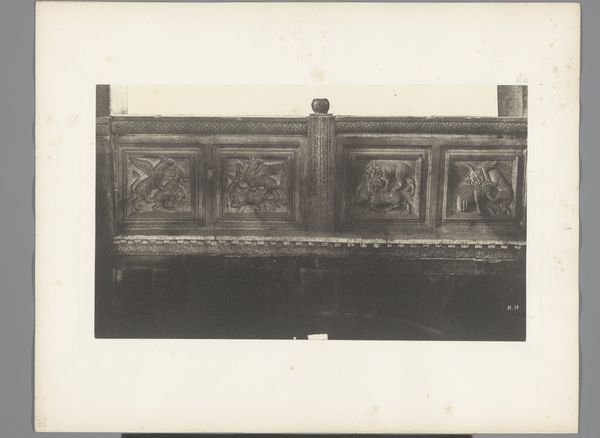
Dimensions: height 313 mm, width 395 mm
Copyright: Rijks Museum: Open Domain
Editor: This gelatin silver print from before 1885 by Carl Heinrich Jacobi is called "Ornament met heiligen van de San Marco in Venetië". It captures what seems to be a stone structure, perhaps a shrine. There's an interesting blend of grandeur and antiquity in the picture. What jumps out to you when you look at this image? Curator: What immediately strikes me is the interplay between power and representation, and how that relates to Venice’s complex historical identity. Think about San Marco, a site where Byzantine, Romanesque, and Renaissance aesthetics collide. This "ornament," this relic of power, embodies that tension. Who were the saints depicted, and what did they represent to the Venetian Republic? Editor: That's fascinating. I hadn’t thought about it that way. The saints felt almost like background elements. Curator: Consider their presence, then, not as benign figures, but as ideological cornerstones. How did Venice, a city built on trade and, at times, exploitation, use religious iconography to legitimize its actions? Does this photographic reproduction, taken centuries later, continue to serve that function, or does it offer a new lens through which to critique the city's historical narrative? Editor: It’s interesting to think of this print as not just a historical document, but also potentially an active participant in the continuation of that narrative. Maybe it's prompting us to consider the historical power structures still visible in these ornaments today. Curator: Precisely. These visual echoes of the past can resonate powerfully today. Thank you, this dialogue is enriching!
Comments
No comments
Be the first to comment and join the conversation on the ultimate creative platform.
